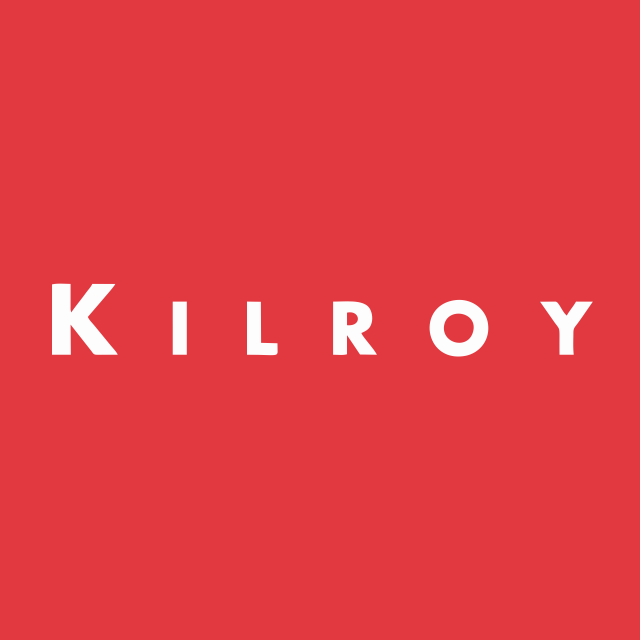Company Analysis Kilroy Realty Corporation
1. Summary
Advantages
- Dividends (6.04%) are higher than the sector average (3.21%).
- The stock's return over the last year (-1.76%) is higher than the sector average (-4.64%).
Disadvantages
- Price (35.07 $) is higher than fair price (20.69 $)
- Current debt level 51.38% has increased over 5 years from 41.01%.
- The company's current efficiency (ROE=3.91%) is lower than the sector average (ROE=6.02%)
Similar companies
2. Share price and performance
2.1. Share price
2.2. News
2.3. Market efficiency
| Kilroy Realty Corporation | Real Estate | Index | |
|---|---|---|---|
| 7 days | 1.4% | -9.1% | -1.2% |
| 90 days | -16.3% | -10.8% | -6.6% |
| 1 year | -1.8% | -4.6% | 6.9% |
KRC vs Sector: Kilroy Realty Corporation has outperformed the "Real Estate" sector by 2.88% over the past year.
KRC vs Market: Kilroy Realty Corporation has significantly underperformed the market by -8.68% over the past year.
Stable price: KRC is not significantly more volatile than the rest of the market on "New York Stock Exchange" over the last 3 months, with typical variations of +/- 5% per week.
Long period: KRC with weekly volatility of -0.0339% over the past year.
3. Summary of the report
4. Fundamental Analysis
4.1. Stock price and price forecast
Above fair price: The current price (35.07 $) is higher than the fair price (20.69 $).
Price is higher than fair: The current price (35.07 $) is 41% higher than the fair price.
4.2. P/E
P/E vs Sector: The company's P/E (22.59) is lower than that of the sector as a whole (61.35).
P/E vs Market: The company's P/E (22.59) is lower than that of the market as a whole (73.03).
4.2.1 P/E Similar companies
4.3. P/BV
P/BV vs Sector: The company's P/BV (0.8473) is higher than that of the sector as a whole (-0.8993).
P/BV vs Market: The company's P/BV (0.8473) is lower than that of the market as a whole (22.33).
4.3.1 P/BV Similar companies
4.4. P/S
P/S vs Sector: The company's P/S indicator (4.24) is lower than that of the sector as a whole (7.68).
P/S vs Market: The company's P/S indicator (4.24) is lower than that of the market as a whole (16).
4.4.1 P/S Similar companies
4.5. EV/Ebitda
EV/Ebitda vs Sector: The company's EV/Ebitda (13.17) is lower than that of the sector as a whole (20.69).
EV/Ebitda vs Market: The company's EV/Ebitda (13.17) is lower than that of the market as a whole (23.03).
5. Profitability
5.1. Profitability and revenue
5.2. Earnings per share - EPS
5.3. Past profitability Net Income
Yield Trend: Rising and has grown by 2.69% over the last 5 years.
Earnings Slowdown: The last year's return (0%) is below the 5-year average return (2.69%).
Profitability vs Sector: The return for the last year (0%) is lower than the return for the sector (12.56%).
5.4. ROE
ROE vs Sector: The company's ROE (3.91%) is lower than that of the sector as a whole (6.02%).
ROE vs Market: The company's ROE (3.91%) is lower than that of the market as a whole (25.16%).
5.5. ROA
ROA vs Sector: The company's ROA (1.86%) is lower than that of the sector as a whole (3.74%).
ROA vs Market: The company's ROA (1.86%) is lower than that of the market as a whole (6.67%).
5.6. ROIC
ROIC vs Sector: The company's ROIC (2.37%) is lower than that of the sector as a whole (6.96%).
ROIC vs Market: The company's ROIC (2.37%) is lower than that of the market as a whole (9.31%).
7. Dividends
7.1. Dividend yield vs Market
High yield: The dividend yield of the company 6.04% is higher than the average for the sector '3.21%.
7.2. Stability and increase in payments
Dividend stability: The company's dividend yield 6.04% has been steadily paid over the past 7 years, DSI=1.
Dividend growth: Company's dividend yield 6.04% has been growing over the last 5 years. Growth over 6 years.
7.3. Payout percentage
Dividend Coverage: Current payments from income (120.35%) are at an uncomfortable level.
Pay for your subscription
More functionality and data for company and portfolio analysis is available by subscription




